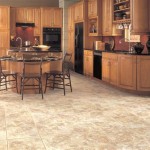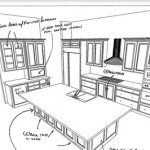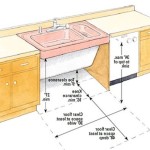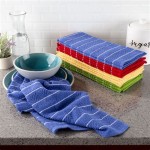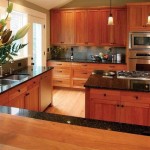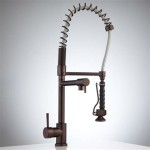Kitchen Backsplash Trim Ideas For A Stylish And Practical Room
The kitchen backsplash is more than just a protective surface; it is a crucial design element that contributes significantly to the overall aesthetic and functionality of the kitchen space. Kitchen backsplash trim, often overlooked, serves as the finishing touch, elevating the backsplash from a simple barrier to a cohesive and stylish feature. The purpose of backsplash trim extends beyond aesthetics; it protects the edges of the backsplash material, preventing chipping and damage, and it also provides a clean and professional finish, concealing any uneven cuts or gaps.
Selecting the right backsplash trim involves considering various factors including the material of the backsplash, the existing kitchen decor, and the desired style. The diverse range of options available, from classic ceramic tiles to modern metal strips, allows for personalized design choices that enhance the kitchen's ambiance. This article explores a comprehensive overview of kitchen backsplash trim ideas, focusing on their aesthetic appeal, practical benefits, and installation considerations.
Materials and Styles of Kitchen Backsplash Trim
The choice of material for kitchen backsplash trim significantly impacts the overall look and feel of the kitchen. Each material offers unique characteristics in terms of durability, maintenance, and aesthetic appeal. Understanding these characteristics is essential for making an informed decision that complements the backsplash and the overall kitchen design.
Ceramic and Porcelain Trim: Ceramic and porcelain tiles are a traditional and versatile option for backsplash trim. They are available in a wide array of colors, shapes, and sizes, making them easily adaptable to various backsplash designs. Their inherent resistance to water and stains makes them a practical choice for the kitchen environment. Ceramic and porcelain trim can be used to create a seamless transition between the backsplash and the surrounding wall, offering a clean and uniform aesthetic. Common styles include bullnose trim, which features a rounded edge for a smooth finish, and pencil trim, which is a thin, rectangular tile that adds a subtle decorative element.
Metal Trim: Metal trim offers a sleek and contemporary look, often used in modern and industrial-style kitchens. Stainless steel, aluminum, and copper are popular choices, each providing a distinct visual appeal. Stainless steel is highly durable and resistant to corrosion, making it ideal for high-moisture environments. Aluminum is lightweight and versatile, while copper adds warmth and character to the kitchen. Metal trim can be used to create a sharp, clean edge or to add a decorative accent. Metal trim is particularly effective in accentuating the lines and geometry of the backsplash design.
Glass Trim: Glass trim provides a translucent and reflective surface that adds depth and dimension to the backsplash. Available in various colors and finishes, glass trim can be used to create a subtle shimmer or a bold statement. Its non-porous nature makes it resistant to stains and easy to clean. Glass trim is particularly effective in enhancing the light in the kitchen, making the space feel brighter and more open. It can be used as a decorative border or as a unifying element to tie together different sections of the backsplash.
Natural Stone Trim: Natural stone trim, such as granite, marble, and slate, adds a touch of luxury and sophistication to the kitchen. Each type of stone offers unique veining and texture, creating a one-of-a-kind look. Granite is known for its durability and resistance to heat and scratches, while marble exudes elegance and timeless appeal. Slate offers a rustic and textured finish, ideal for creating a natural and earthy ambiance. Natural stone trim requires sealing to protect it from stains and moisture. Its use can elevate the backsplash to a focal point in the kitchen design.
Wood Trim: Wood trim brings warmth and natural beauty to the kitchen, creating a cozy and inviting atmosphere. Different types of wood, such as oak, maple, and walnut, offer varying grains and colors. Wood trim can be stained or painted to match the existing kitchen cabinets or to create a contrasting accent. It is essential to seal wood trim properly to protect it from moisture and warping. Wood trim is particularly effective in farmhouse and traditional-style kitchens.
Design Considerations for Kitchen Backsplash Trim
The design considerations for kitchen backsplash trim extend beyond mere aesthetics. The trim should complement the backsplash material, enhance the overall kitchen design, and provide practical benefits. Considering the style, color, and texture of the trim in relation to the existing kitchen elements is crucial for achieving a harmonious and balanced look.
Color Coordination: Color coordination is a fundamental aspect of backsplash trim design. The trim color should either match the backsplash tiles for a seamless and uniform look or contrast with the tiles to create a visual accent. Matching the trim color to the grout color can also create a cohesive and streamlined appearance. Contrasting colors can be used to highlight specific areas of the backsplash or to add a pop of color to the kitchen. Neutral colors, such as white, gray, and beige, are versatile options that complement a wide range of backsplash designs.
Style Compatibility: The style of the backsplash trim should align with the overall kitchen design. For example, a modern kitchen might benefit from sleek metal trim or minimalist glass trim, while a traditional kitchen might be enhanced by classic ceramic trim or ornate wood trim. The trim style should also complement the shape and pattern of the backsplash tiles. For example, a subway tile backsplash might pair well with simple pencil trim, while a mosaic tile backsplash might be enhanced by a more decorative border.
Size and Proportion: The size and proportion of the backsplash trim should be carefully considered to ensure a balanced and visually appealing look. The trim should be neither too large nor too small in relation to the backsplash tiles and the overall kitchen space. Thin trim can create a subtle and understated look, while thicker trim can make a bolder statement. The proportion of the trim should also be consistent throughout the backsplash, creating a sense of harmony and balance.
Texture and Finish: The texture and finish of the backsplash trim can add depth and dimension to the kitchen. Textured trim can create a tactile and visually interesting surface, while smooth trim can provide a sleek and modern look. Matte finishes are ideal for creating a subtle and understated look, while glossy finishes can add a touch of glamour and sophistication. The texture and finish of the trim should complement the texture and finish of the backsplash tiles, creating a cohesive and harmonious design.
Functionality: Beyond aesthetics, the functionality of the backsplash trim should also be considered. The trim should protect the edges of the backsplash material from chipping and damage. It should also be easy to clean and maintain, ensuring that it remains in good condition for years to come. Choosing trim materials that are resistant to water, stains, and heat is essential for ensuring long-term durability and performance.
Installation and Maintenance of Kitchen Backsplash Trim
Proper installation and maintenance are crucial for ensuring the longevity and aesthetic appeal of kitchen backsplash trim. Incorrect installation can lead to water damage, uneven surfaces, and premature wear and tear. Regular maintenance, including cleaning and sealing, can help preserve the trim's appearance and prevent damage.
Installation Techniques: The installation of backsplash trim typically involves cutting the trim to size, applying adhesive to the back, and pressing it firmly onto the backsplash surface. The method may vary depending on the type of trim and the backsplash material. For ceramic and porcelain trim, tile adhesive or thin-set mortar is commonly used. For metal trim, construction adhesive or screws may be more appropriate. It is important to ensure that the trim is aligned properly and that the adhesive is evenly distributed to prevent gaps or uneven surfaces. Using a level and a spacer can help ensure a professional and accurate installation.
Grouting and Sealing: Grouting is an essential step in the installation of ceramic, porcelain, and natural stone trim. Grout fills the gaps between the trim and the backsplash tiles, providing a watertight seal that prevents water damage. The grout color should be chosen to complement the trim and the backsplash tiles. After the grout has dried, it should be sealed to protect it from stains and moisture. Sealing the grout is particularly important in high-moisture areas, such as around the sink and the stovetop. Applying a sealant every year or two can help maintain the grout's appearance and prevent it from cracking or discoloring.
Cleaning and Maintenance: Regular cleaning is essential for maintaining the appearance of kitchen backsplash trim. The trim should be cleaned regularly with a mild soap and water solution. Avoid using harsh chemicals or abrasive cleaners, as they can damage the trim's surface. For metal trim, a stainless steel cleaner or a metal polish can be used to remove fingerprints and smudges. For natural stone trim, a stone cleaner can be used to remove stains and dirt. It is important to wipe the trim dry after cleaning to prevent water spots and streaks.
Repair and Replacement: Over time, backsplash trim may become damaged or worn. Chipped or cracked trim should be repaired or replaced promptly to prevent water damage and maintain the backsplash's aesthetic appeal. Small chips and cracks can often be repaired with epoxy or caulk. Larger cracks or damaged sections may require replacing the entire trim piece. When replacing trim, it is important to match the existing trim as closely as possible to ensure a seamless and uniform look. Consulting with a professional contractor can help ensure that the repair or replacement is done properly and safely.
Professional Assistance: While some homeowners may be comfortable installing backsplash trim themselves, others may prefer to hire a professional contractor. A professional contractor has the experience and expertise to ensure that the installation is done correctly and efficiently. They can also provide valuable advice on the best materials and techniques for your specific kitchen and backsplash design. Hiring a professional can save time and effort and ensure that the backsplash trim is installed to the highest standards.

40 Pretty And Practical Kitchen Backsplash Ideas

40 Pretty And Practical Kitchen Backsplash Ideas

77 Inspiring Kitchen Backsplash Ideas For 2024

6 Ways To Finish The Edges Of Your Kitchen Backsplash

15 Stunning Small Kitchen Backsplash Ideas Decorpot

Kitchen Backsplash Ideas Inspiring Photo Gallery

Unique Kitchen Backsplash Ideas 2024 An Effective Guide
:strip_icc()/149227403_1128522247578130_6231868015445811908_n-8c71c052c7d843b69a24ecc60eb5c213.jpg?strip=all)
21 Subway Tile Backsplash Ideas

Chevron Style Backsplash Revamp Your Kitchen Design

34 Best Modern Kitchen Backsplash Ideas Level Up Your Space
Related Posts

